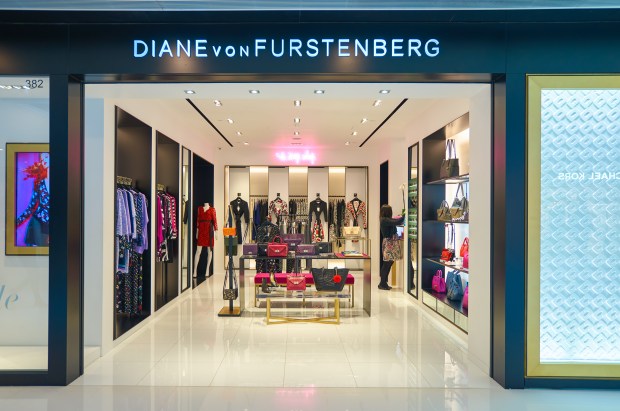Being (Artificially) Intelligent About High Fashion

There’s a problem many online retailers face, particularly when they work on mobile. The interest of consumers is great, traffic is strong and they are getting all kinds of page views and repeat visitors. What they don’t have is the conversion data to back it up: Online shoppers are looking but ultimately not buying. It’s a situation that is understandably frustrating for retailers. Buying boosts the bottom line; browsing does not.
Such was the trouble that Diane von Furstenberg’s web portal DvF.com found itself facing, according to Director of eCommerce Felipe Araujo. When the company looked at where traffic growth on the site was coming from, mobile was outpacing desktop fairly convincingly. But when it came to revenue growth, mobile was punching far below its traffic rate.
“Mobile is at least 50 percent of our traffic, but not our revenue. To be honest, we all kind of gave up on fixing that,” Araujo said. Their line of thought: Maybe mobile was just not the platform for them.
But big changes have come to the DvF brand in the last year. Most notably, its namesake Diane von Furstenberg’s departure as creative director of the luxury brand. That news sparked changes: a new logo, a new high fashion designer (Jonathan Saunders) and a wholesale overhaul of its eCommerce products.
The company also had a new priority, Araujo said: making product discovery and navigation work better on mobile and turning that discovery into dollars spent at checkout.
“Mobile is great if you know what you want; but it’s not great for discovery,” Araujo noted in an interview. “A lot of the mobile discovery phase is on social media, like Instagram and Pinterest. We wanted to bring mobile discovery within our walls.”
Consumers want a smooth experience and an easy transition when they are moving from discovering a product they want to actually purchasing it. The problem with social media discovery — even ones that have built in various “shoppable” features, like buy buttons — is that the experience feels fragmented as the phone bounces between the social media and retail site. On a desktop, that might only be a mild irritation, since it’s fairly easy to look at two windows at once. On a mobile phone, however, with its smaller screen, the shopping experience is clunkier and more irritating.
To build that elusive better experience, DvF paired with Qubit, an artificial intelligence (AI)-based personalization platform that algorithmically creates a discovery feed on the DvF mobile site. That feed, powered by learning AI, is customized to the specific user through data about past behavior collected and interpreted by the software. If it works as intended, the AI virtual assistant builds a more personalized bridge between the consumer and the products they want, making the consumer’s mobile shopping journey more simple.
This platform doesn’t solve all of mobile’s native issues when it comes to eCommerce — and there are several — but it does aim to take a friction-filled process and pair it down to something more manageable and enjoyable for the consumer. Perhaps most importantly, the design keeps the consumer engaged with the products they want, instead of being distracted by the process of trying to find what they want on a mobile site.
“This solves a few mobile pain points: You’re creating an app-like experience in real time, while making a custom journey for each user. That’s where the opportunity is,” said Bud Goswami, lead data scientist at Qubit. “When you’ve paid to have all that traffic on the site, you need to give people a reason to stick around longer.”
To stick around and also to buy. On that front, though the service is new, DvF is reporting some traction.
The conversion rate for mobile shoppers that engage with the AI tool is 4.3 percent. That rate may not sound amazing, but according to Araujo, that is about 400 percent higher than mobile conversions for shoppers who don’t interact with it.
The goal now is to get more online shoppers using the tool, since, as of today, only about 7.2 of DvF’s high fashion shoppers are engaging with it.
However, the luxury brand is committed to building a better, more tailored and social experience within their mobile app. These big technological upgrades have been accompanied by design changes to streamline the site and a new focus on treating the mobile digital channel not as a lost cause, but as a platform from which future revenue growth can originate.
It’s a big task, but with their new AI shopping assistant is only getting smarter by the minute.
